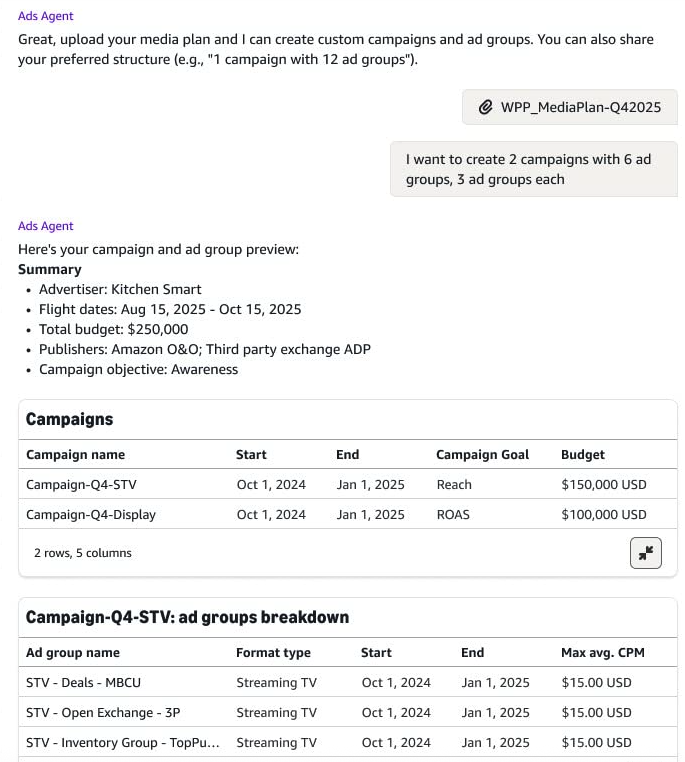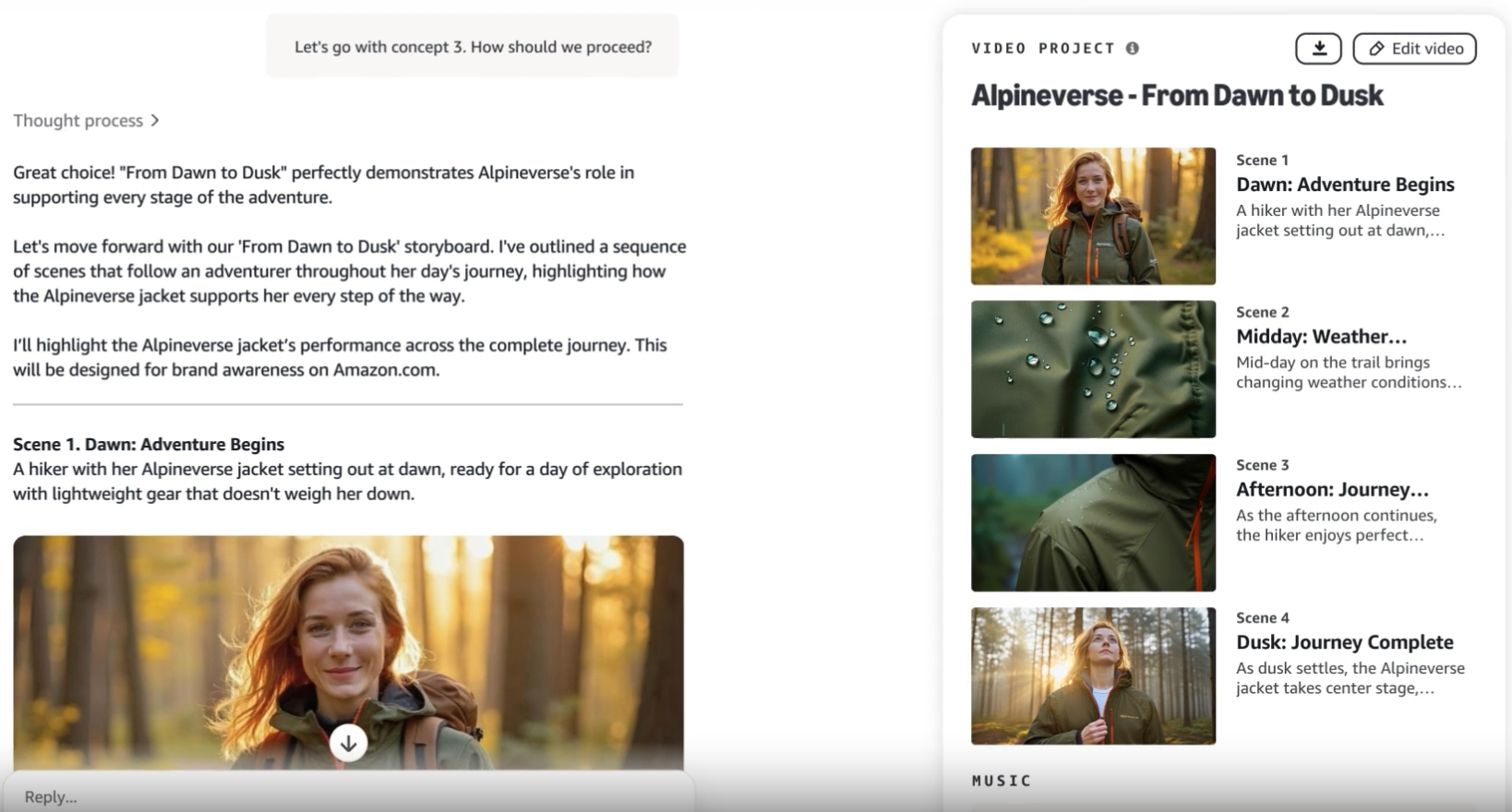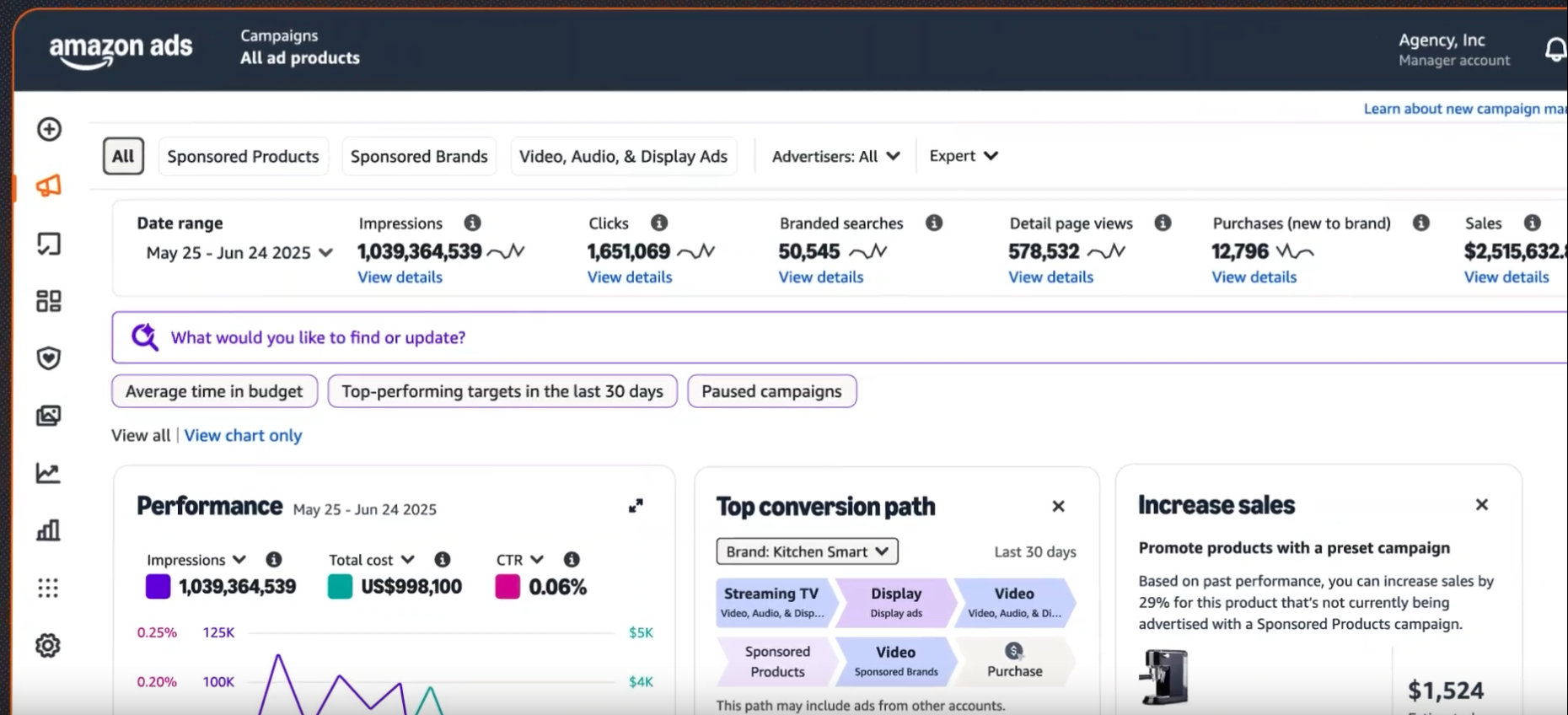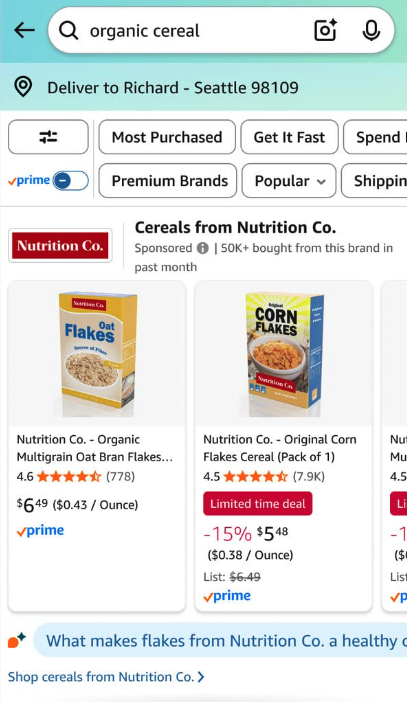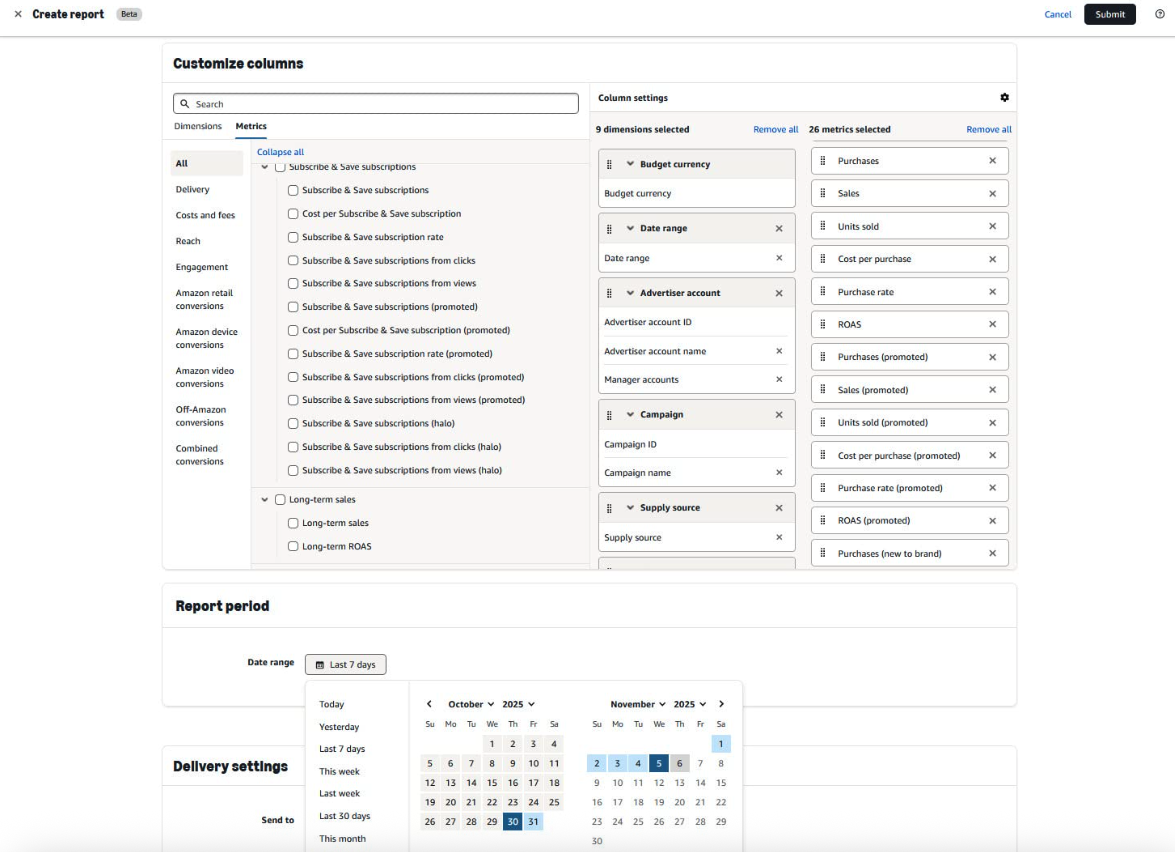Amazon Ads unBoxed is an annual conference dedicated to showcasing ad solutions, and this year it took place in Nashville on November 11–12, 2025. The two-day event brought together advertisers, industry partners, and brand leaders to see the unveiling of Amazon Ads’ vision for the future – focusing on how artificial intelligence will amplify campaigns by simplifying once-sophisticated tools and management strategies.
This article will walk through a high-level overview of everything that was announced at unBoxed 2025, how these changes impact brands who advertise on Amazon, and the pros and cons to shifting full-funnel advertising onto agentic AI models.
The AI Revolution: Agentic Tools Take Center Stage
The most significant announcements at Amazon Ads unBoxed 2025 centered on the rapid integration of agentic AI capabilities: tools designed to automate complex tasks and augment human strategy. As AI advances and is integrated deeper into the tools we’re using every day for ad management, we’ll likely see retail media take a new shape over the next few years.
Key AI-Powered Announcements
Ads Agent
This new AI tool simplifies how advertisers plan, launch, and optimize campaigns. Powered by AI and Amazon’s first-party insights, Ads Agent automates tasks such as adjusting campaigns, identifying targeting segments, and generating data-driven recommendations. It can also streamline operations with Amazon DSP campaigns, allowing brands to upload a custom media plan and have Ads Agent create the campaign structure on their behalf or use natural language to optimize campaigns (eg: “turn off campaigns with < 2 ROAS”).
Crucially, Ads Agent leverages deep Amazon Marketing Cloud (AMC) and SQL skills, helping advertisers build complex analytics queries using natural language. Not only does this accelerate time-to-insight, but it importantly addresses the historical barrier to AMC: knowing SQL code.
Ads Agency has already launched and is accessible on certain pages within Amazon Marketing Cloud (AMC) and Multimedia Solutions with Amazon DSP.
Creative Agent
Introduced as a conversational agentic AI tool, Creative Agent acts as a creative partner and strategist. It combines Amazon’s retail intelligence signals with conversational guidance to produce high-quality advertising content quickly and at no cost. Creative Agent can generate display assets, videos, and streaming TV ads.
How does Creative Agent differ from Amazon’s existing AI tools in Creative Studio?
At last year’s unBoxed event, Amazon unveiled Creative Studio allowing brands to input an existing product image or detail page and get new, relevant, AI-generated creative assets. Although this was a helpful starting point for brands with minimal creative capabilities, now what makes Creative Agent so much more powerful is its ability to perform market research on a brand and its products. From there, Creative Agent develops unique creative concepts, storyboards, videos, images, and end cards all within a single workflow.
Revamped Campaign Manager
Powered by AI, Campaign Manager will now be a centralized command center that unifies sponsored ads and multimedia solutions with Amazon DSP into one single ad platform. This view aims to reduce the complexity of fragmented tools, giving advertisers an easy overview of all campaigns in one place.
The updated Campaign Manager will also feature:
- Smart Search – Type in specific parameters and immediately filter out irrelevant data. Amazon shared that early testing of smart search usage reduced bid optimization workflow time by 26%.
- Guidance Cards – Highlights conversion paths and products that aren’t being advertised effectively.
- Multi-Account Management – Toggle between sub-brands without having to log out/in.
- KPI View – See the impressions, clicks, brand searches, and purchases for all Sponsored Products and Sponsored Brands ads upon logging in.
This new-and-improved version of Campaign Manager is currently in beta mode for a select group of advertisers and partners. A broader rollout is planned for late this year.
Sponsored Products and Sponsored Brands Prompts
This AI-powered enhancement engages shoppers by surfacing relevant product questions and information directly on the search results page. When engaged, shoppers are launched into a conversation with the Rufus chatbot, making this a valuable and interactive ad option.
These sponsored prompts are currently in beta and are automatically enabled for existing campaigns, with opt-out available through the Ads Console.
What Do These Huge Shifts to AI Mean for Brands?
The huge increase in agentic AI for Amazon ads brings both opportunities and challenges for brands.
Opportunities and Benefits of Agentic AI
- Accessibility: The new AI tools are designed to turn sophisticated tools into accessible platforms for all brands, regardless of size or expertise. With agentic advertising capabilities, smaller and less sophisticated brands can gain access to more comprehensive data, from upper-funnel awareness to conversion insights, all within a single view. This helps smaller sellers more easily and fairly level-up and compete with larger sellers on the marketplace.
- Reduced Barrier to Entry: AI significantly lowers the historical barrier to entry for complex Amazon advertising tools like AMC with Ads Agent leveraging SQL skills to allow more novice advertisers to build complex analytics queries with just natural language instead of needing to write SQL code.
- Creative Capabilities: Creative Agent provides fast and on-brand creative assets, at no additional cost. This is especially beneficial for brands that lack an in-house creative design team.
- Efficiency and Strategic Focus: AI agents can automate time-consuming tasks such as campaign planning, launching, and optimization, freeing up advertising teams to focus on high-level strategy. Ads Agent can do this at scale using only natural language, getting advertisers 70–80% closer at a much faster pace than doing so manually.
Challenges and Strategic Considerations for Agentic Advertising
- Evolution of Advertising Roles and Responsibilities: The arrival of agentic AI is going to reshape retail media as we know it over the next few years. The roles and responsibilities of ad managers and agencies like ours will evolve, shifting the majority of our work from manual execution to strategic oversight and leveraging AI.
- Need for Expertise: While AI provides more advanced advertising capabilities, it does not replace the need for strategic thinking, ad budgeting, or the use of correct prompts to reduce potential hallucinations in outputs and decision-making. Ad managers must focus on how to use these tools to become more strategic.
- Budgeting Hurdle Remains: Even with faster execution, brands must still overcome the fundamental hurdle of budgeting and their overall ability to invest in advertising based on margins. Amazon provides the ability to easily invest in certain campaign types or tools like AMC, but brands ultimately still need the money to fund these efforts. Specific recommendations in Campaign Manager will vary greatly between a small brand/new seller and a legacy brand with millions in annual revenue.
- Goal Alignment: There is a potential risk that the AI, optimizing for Amazon’s platform goals, might recommend investment levels or channel allocation—such as investing in DSP or aggressive top-of-search placements—that may not align perfectly with a brand’s specific need for immediate return or their tolerance for lower returns. Amazon’s goal is to get brands to invest in ads, but certain recommendations may not be the best fit for a brand’s marketplace strategy. This reinforces the need for human oversight as brands lean more into trusting AI to drive marketplace decisions.
- Integration with Tech Partners: These new AI systems will likely integrate with existing tech partners like Pacvue, raising the question of how these additions will function alongside the native Ads console. In other words, these AI enhancements not only affect brands but also Amazon’s surrounding technology partners who assist with campaign management.
- Reluctance vs Effectiveness: Since these AI additions are so new, we don’t know how efficient or effective they will be yet, but they are still likely worth testing. For example, we can compare these advancements to when computers first came out; some were reluctant but now we rely on computers every day.
Showcase Products in Action: The Sponsored Products Video Update
Moving on from AI, one key ad placement update announced at Amazon unBoxed 2025 was the launch of Sponsored Products video, a new ad format that integrates with existing Sponsored Products campaigns. Displayed at the top of the search results page, this new ad format allows advertisers to showcase product features through multiple videos. Advertisers can upload 1-5 videos per product, along with descriptive text. Shoppers can easily skip to specific features of interest before clicking through to the product detail page.
What makes this update so important is that it offers brand advertisers a powerful alternative to existing top-of-search (TOS) placements, specifically Sponsored Brands. Historically, the only video ad type displayed prominently at the top of search results was Sponsored Brand video, linking to a brand’s store, for upper-funnel brand awareness. Now, with the introduction of Sponsored Product videos, time-to-purchase can be sped up, pushing shoppers directly to a product page (lower-funnel conversion focus).
More unBoxed Updates for Amazon Advertisers
Beyond AI capabilities and new video campaigns made available to advertisers, Amazon announced several important solutions designed to simplify workflows and enhance visibility:
Sponsored Brands Reserve Share of Voice
Secure TOS Sponsored Brands placements for branded keywords at a fixed, upfront price.
- Predictable presence to boost visibility for high-intent branded searches.
- Beta experiments showed this drove TOS impression share of reserved keywords from 62.7% to 99.3%, resulting in +143% click-attributed sales.
Unified Reporting Experience (Beta)
Amazon introduced a consolidated reporting experience designed to reduce the time spent on report generation. Available in open beta, advertisers can filter and combine data across ad products, accounts, countries, and channels, simplifying cross-channel reporting.
Personalized Full-Funnel Advertising
Overall, unBoxed 2025 highlighted a huge push toward full-funnel advertising, with Amazon additionally announcing Full-funnel Campaigns: a tool that recommends personalized Sponsored Products, Sponsored Brands, display ads, and streaming TV campaign set-up based on brand budget and goals. Designed to simplify and streamline the management of a brand’s entire advertising strategy across the customer journey, the Full-funnel Campaigns tool addresses the complexity that has historically required advertisers to manage several individual ad campaigns across different tools (like separate consoles for search advertising and DSP). Now, instead of managing multiple separate campaigns, advertisers only need to provide a few inputs related to their brand, budget, and goals and will then receive personalized setup recommendations tailored to the specific brand’s opportunities for reaching new customers and drive long-term sales. Once a campaign is launched, Full-funnel Campaigns dynamically adjusts budgets, audiences, and tactics using Amazon insights across all ad formats to optimize holistically for performance over time.
Although budget limitations still need to be considered (and controlled by the brand), this investment in full-funnel campaigns demonstrate the Amazon flywheel concept:
- Laying the groundwork
- Leaning heavily into sponsored products and sponsored brands
- Building up sales velocity
- Putting profits back into top-of-funnel to feed further ad investment
Amazon has been pushing for years to transition advertisers to a full-funnel strategy, as utilizing all available advertising levers is a key growth strategy for brands on the marketplace. The creation of the Full-funnel Campaigns tool, along with the unified Campaign Manager, signifies Amazon’s move toward a single view point where advertisers can see and manage everything – giving all users the ability to win on Amazon by simplifying what had previously been a source of complexity with resistance to adoption.
Key Takeaways: Amplify & Simplify with Amazon Ads AI
The announcements from Amazon Ads unBoxed 2025 showcase a definitive move toward simple advertising through intelligent automation:
- Launch of agentic AI tools like Ads Agent and Creative Agent promise to lower the barrier to entry for complex tasks like creative production and AMC usage, and by unifying disjointed advertising consoles.
- New placements like Sponsored Products video offer highly engaging ways to connect with shoppers.
- This shift requires advertising teams and brand managers to evolve their roles from tactical executors to strategic architects. While AI provides significant efficiencies, the need for strategic guidance on where to invest budget remains critical, as brands must still fund their campaigns and cannot rely solely on AI recommendations that might prioritize maximum spend. The future of Amazon advertising is unified, intelligent, and demands human oversight.
Navigating the powerful rise of agentic AI, new reporting structures, and critical ad placement changes requires specialized expertise. Connect with our team for assistance navigating these advertising changes, ensuring your brand strategically leverages AI for maximum return while maintaining brand oversight.
